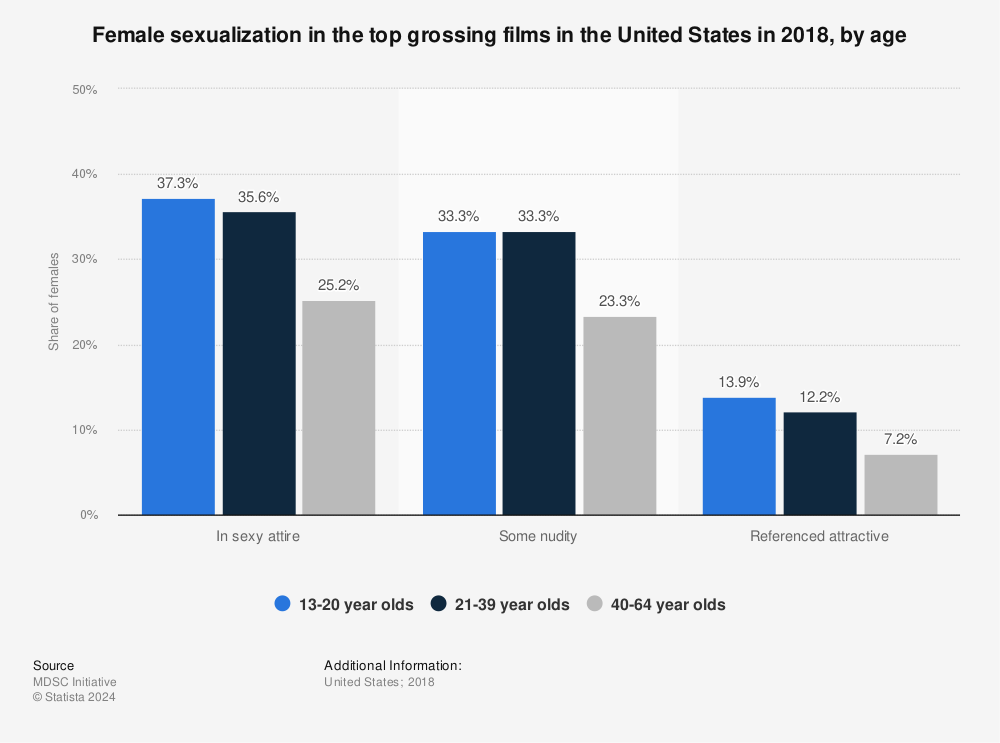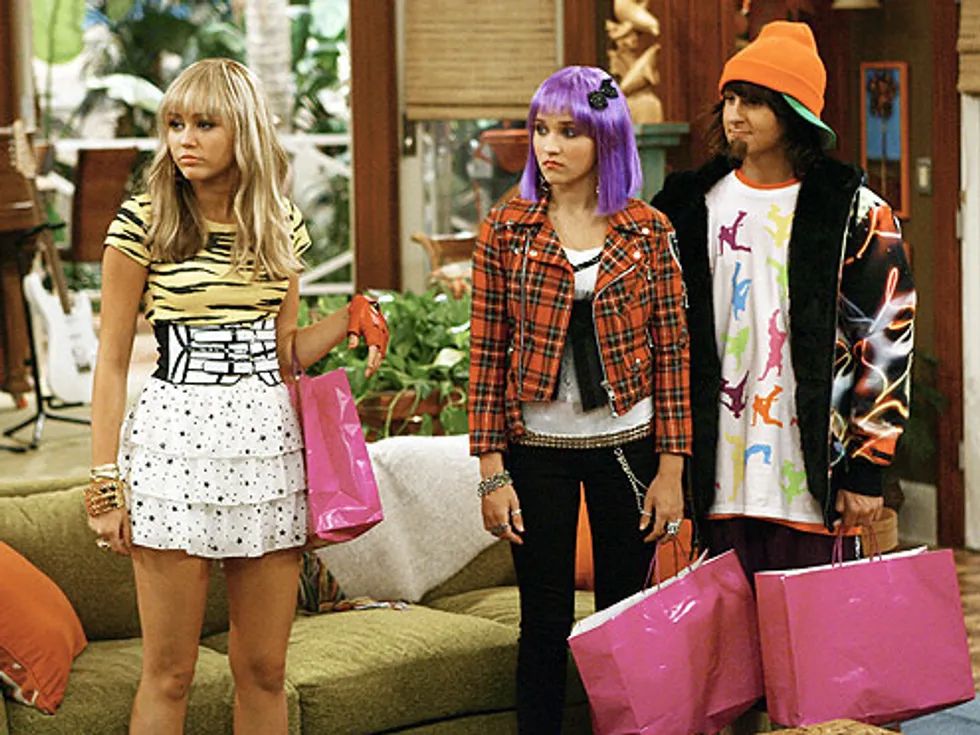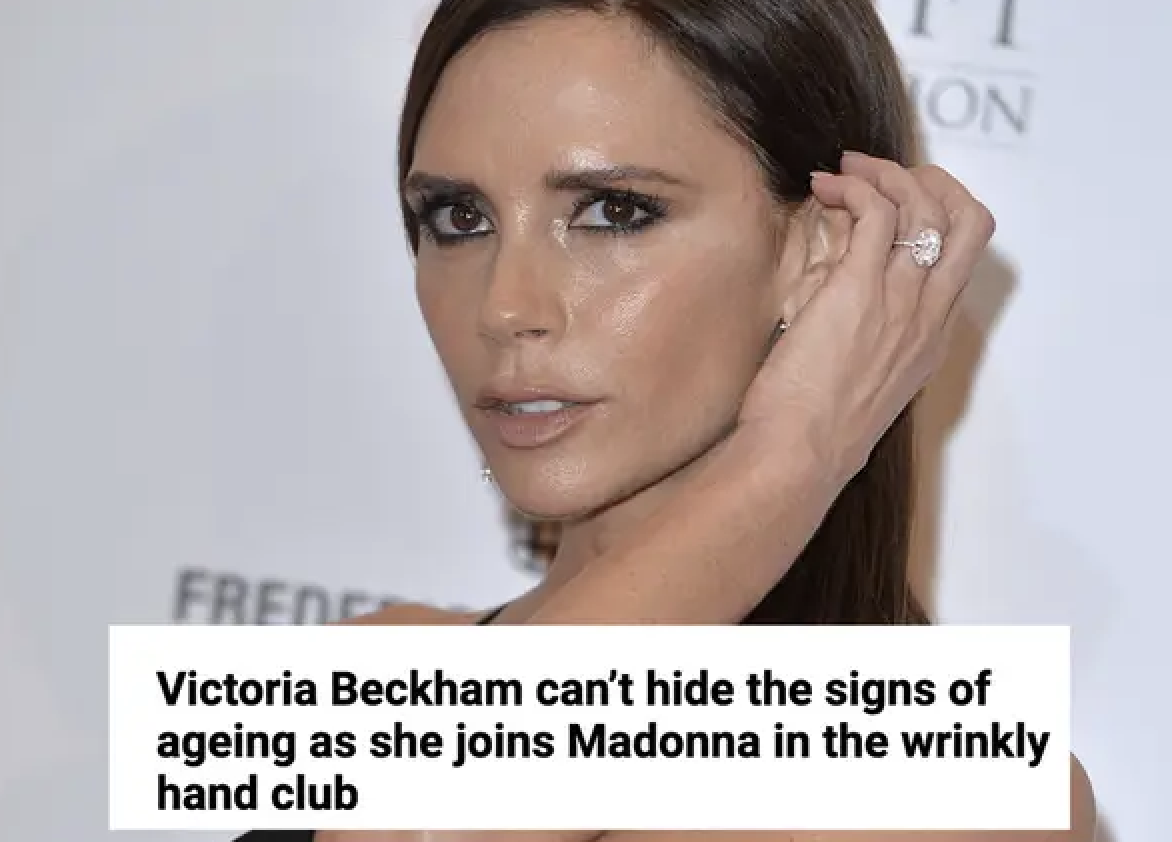The Hypersexualization of Child Stars
How the sexualization of child stars affects their child audiences

The objectification of child stars has been a common phenomenon in the entertainment industry for decades. Young actresses such as Shirley Temple, Drew Barrymore, Brooke Shields, and Natalie Portman to name a few were all child stars who were subjected to sexualization and objectification during their careers.
During the filming of 'The Blue Lagoon', Brooke Shields, who was only 14 years of age at the time, was required to appear in a scene where she was unclothed. Shields later expressed her discomfort with the scene, stating that she believed director Randal Kleiser intended to capture her actual sexual awakening. In her subsequent remarks, she said, "They expressed their desire to convert it into a reality show." It was evident that she was still in the early stages of her sexual development and, therefore, lacked the required experience. In hindsight, after many years had passed, she pondered her earlier years as a young actor and shared her realization, "It was never truly about me; I was never protected. Although there were moments of fun and love, ultimately, I was merely a pawn, a piece, a commodity," she lamented. It is disheartening that her male directors failed to prioritize her well-being and instead portrayed her as an object instead of a person.
Danielle Fishel, a former child star, was harassed early in her career while filming Boy Meets World. As a teenager, she was informed that several men eagerly awaited her 18th birthday. She later shared that a male executive had even mentioned keeping a calendar featuring her in his bedroom. These disgusting and inappropriate comments highlight the disturbing mindset towards minors in the entertainment industry. Despite being perceived as an adorable and pure child, Shirley Temple had costumes and dance performances intended to attract adult viewers. Similarly, Brooke Shields was controversially cast in the film "Pretty Baby" at the age of twelve, which involved her playing a child prostitute.
These movies are often defended by claiming that they are "art," but the sexualization of children for the sake of entertainment is not acceptable and should not be tolerated. It is important to recognize the harm that these actions can cause and work towards creating a safer and more respectful environment for all individuals, regardless of their age or gender.

Child Stardom As The Ideal Child

Celebrities have always been the image of perfection, the standard of beauty that society is convinced to work towards. Living in a mediacentric world, celebrities are constantly under surveillance and we as the audience are constantly adopting their behaviors, clothing choices, and belief systems. These ideals not only fall upon adult star images but children as well. The entertainment industry has carefully curated the ideal child that has been molded using the clay of society's ideological beliefs. Child stars sell this emerging re-articulation of childhood to their audience. Studies show that teens in the United States aged between 13-18 years spent an average of three hours and 16 minutes watching TV or videos daily in 2021. The frequency at which these ideals are presented to kids normalizes the ideas they see on the screen, presenting them with a daily reminder of what they should look like and act like. Unfortunately, for young kids this ideal reflects an adult-centric view of children’s behavior. These fictional characters adopt markers of adult sexuality through their revealing clothing choices makeup, dance and posture. Drawing upon Judith Butler’s theory of performativity, these girl characters are performing adulthood, constructed through the lens of the male gaze so that they are perceived as women. Permitting their watchers to objectify them.

Effects On Actors And Their Audiences

Child actor sexualization has been a recurring issue for a long time. Many famous child actors such as Brooke Shields, Natalie Portman, and Millie Bobby Brown have been sexualized in the media. This constant repetition has made it seem normal to society to sexualize young girls both in media and in their subconscious thoughts. Objectification theory, as described by Fredrickson and Roberts, states that daily exposure to sexualizing practices can lead to negative psychological outcomes. This is because society treats individuals on and off-screen, which reflects in the way individuals treat themselves. For example, if young girls watch television shows where girls are scrutinized for their appearances, they will likely view their own bodies the same way. Additionally, teenagers are often cast to play younger characters, setting unattainable feminine ideals for young girls who may sacrifice their health to achieve them. TV shows like 'Victorious', 'ICarly', 'Teenwolf', and 'Austin and Ally' often cast actors who are much older to play high schoolers, such as Ally from 'Austin and Ally' playing a 15-year-old when she was actually 18. Child actor Jannette McCurdy, who played the character Sam in 'ICarly' and 'Sam and Cat', wrote about her experience growing up in the industry in her book 'I'm Glad My Mom Died'. In the book, she reflects on the years of disordered eating she had to endure in order to stay small and look young enough to book teen roles on TV, despite being in her 20s. McCurdy is a powerful example of how these idealistic standards of 'the child' heavily impact the audience and the actresses who are forced to fit into the mold.

Ariana Greenblatt, aged 16

Many significant child actors that we know of today have grown up within the entertainment industry and have voiced out about their experience of being sexualized as young actors and actresses in their career. Many young actresses have expressed the unfortunate reality they had to deal with in order to do their job seriously. Former Disney star and all-time camp rock favourite Alyson Stoner talked about the sexual harassment and other forms of mistreatment she experiences as a child actor. “The onset of puberty has turned my waist and bust into the main objects of attention and inspection. This will also categorize my career trajectory,” she continues. “I’ve learned that it is safer to dissociate in order to survive what my mind and body are subjected to daily. I’ll be numb for another five years, but all you will see is the ever-highly-functioning, Smiling Girl #437.” Child actors have expressed discomfort with the way their careers have been sexualized. In a personal essay published in 2021 for Harper’s Bazaar U.K, The O.C star Misca Barton discusses the long-term effects of being sexualized as a teenager that takes a toll on her mental health. She goes on to say “The truth is that sexuality has always been a component of my career. Even from a young age, I was sexualized”
Furthermore, one of Hollywood's most recognized child actors, Drew Barrymore shared that while she experienced sexual harassment as a child star, she felt like she couldn't speak up about it because the situations were so confusing for her at the time. “I didn’t feel like I could speak to it because I experienced so many things that were so inappropriate at such a young age that I was so confused about what I was accountable for, what did I put myself into, where was I, was I a part of things. We were children," she said.
“The onset of puberty has turned my waist and bust into the main objects of attention and inspection. This will also categorize my career trajectory,”
Alyson Stoner






Girls Vs Boys
While there has been a shift in Western media towards the increased sexualisation of young boys it still pales in comparison to the longstanding phenomenon of objectifying young girls. With Hollywood's deep immersion into the Lolita complex. In 1932 Shirley Temple was portrayed as an exotic dancer at the age of 3. Demonstrating how young girls' innocence has long been exploited and commercialized with little girls becoming sex symbols.
Unlike men such as George Clooney and Brad Pitt who became “silver foxes” with age. Female stars are deemed “washed up” and “past their best before date”. Male stars reach their peak earnings at 34 whereas males peak at 51. Hollywood is run by white, older men who fetishize young girls. Mulvey writes “In reality the fantasy world of the screen is subject to the law which produces it”. On-screen, we witness older men retaining lead roles, showcasing their enduring value in an industry where ageism runs rampant. This perpetuates a cycle where those in positions of power, often older white men themselves, avoid being labeled as "past their best before date," while women are viewed as disposable commodities catering to the male gaze until they are replaced by younger talent.


Shirley Temple dressed as a exotic dancer in "war babies" at age 3
Shirley Temple dressed as a exotic dancer in "war babies" at age 3
This limited window of sexuality for women leads to the hypersexualisation of young girls. As there is only a limited time for women to be seen as desirable. While there are examples of young male stars such as Finn Wolfhard getting sexualised this is nothing in comparison to the plethora of young female actors. At the ripe age of 13 Milly Bobby Brown was pictured in a magazine which read “Why TV Is Sexier Than Ever”.
On popular shows such as Victorious and Drake and Josh young female actors are pictured in tight-fitting tank tops and short skirts while their male counterparts are dressed in loose t-shirts and button-ups. These shows are also rife with sexual innuendos primarily targeting female cast members in Victorious star Daniella Monet recounts having to eat a pickle while applying lip gloss. Hollywood has homogenized young girls acting out directors such as Dan Schinder and Harvey Weinstein's perverted fantasies. These sexual themes are so normalized and ingrained in children's Television that their prevalence only becomes evident when pointed out to viewers.
This hypersexualization of young female celebrities contributes to the objectification of girls by boys and fosters self-objectification among girls themselves. Although self-objectification can occur in both genders, research indicates that women tend to experience it to a significantly higher degree, influenced by the prevailing cultural discourse ingrained in them from an early age.
Back To Now

Many of our favourite child actors have been sexually exposed in the entertainment industry, so how can this impact girls and boys on social media today? Girls and boys have a negative perception of how they are portrayed on social media due to popular and influential role models who express sexualized behaviour online. What many girls and boys are led to believe about themselves through social media can shape how they present themselves online through self-objectification which in some case can cause profound negative outcomes, including eating disorders, anxiety, depression, and self-harm as well as the increase of sexual victimization (Ramsey and Horan, 2018).
the long-term effects of growing up in this industry, female celebrities do not know what is normal and what is not, this blurs the lines for their fans and audiences as we regularly are exposed to these behaviours and believe them to be normal. allowing ourselves to fall victim.
The media exposes its audience to a wide range of positive and negative aspects of the internet. Focusing on hyper sexualization of children, girls and boys generates ideas of how they should be displayed online by day-to-day sexualized content. Observing the social media platforms we use on a daily basis, like Instagram, Snapchat, and TikTok, we examine these applications and the features that support the self-sexualization strategy that is reflected in their user experience (UX) of the platform. Centring our attention to what girls and boys are on. In 2023 the top social media platform with 93% of teens visiting the platform is YouTube placing Tik Tok with 63% in second and snapchat and Instagram following in after with 60% and 59% of teenage visits. From the study exploring social media as an ideological apparatus for sexualization and cultural shift, Bouajjar (2024) explores the idea that TikTok, snapchat and Instagram controls the beacon of today's body culture. They are the platforms where sexual content can be viewed and created. He goes on to say that they not only set and promote unrealistic beauty standards, sending girls down a path of beauty, but they also self-sexualized themselves. He investigates the impact stated by Engeln (2017) declaring that we “cannot pretend that what we see in the media does not shape our thoughts and behaviours” Much research reinforces the self-sexualization with adolescent mainly females that social media influences. Catherine (2021) unpacks the ideas of social media that relevantly supports Engeln (2017) findings. Sexualization on these platforms has become a reality for females. Instagrams display endless clothes and body exposure that girls highlight in their posts, Snapchat filters of full glamor to cover their natural face, and TikTok alluring body and gesture movements from dance trends and edits.
In a study from UNICEF called 'Save the children' it focuses on the development childhood experience can affect adolescents. "Childhood is a unique period of rapid physical and psychological development during which young people’s physical, mental and emotional health and well-being can be permanently affected for better or worse”.

Conclusion
To summarize the sexualization of child stars particularly girls is nothing new. With the dominant discourse of young girls being exploited and fetishized in Hollywood both on and off-screen. This on-screen narrative has fostered a troubling trend of self-objectification and an incessant pursuit of physical perfection, as children idealize the seemingly flawless stars they see. As technology and society have evolved we have seen this trend of the sexualisation of children spread from Hollywood and onto platforms such as TikTok and Instagram where this content is more accessible and inescapable than ever.
While this sexualization of child stars is so ingrained in our culture it may seem hopeless. There are still things we as a society can do to change or at least question this. As celebrities speak out about their experiences we must hold accountable those who perpetuate such exploitation and take measures to safeguard younger generations from similar harm. This includes implementing stricter guidelines for behaviour both on and off-set, ensuring that industry standards prioritize the well-being and dignity of young performers. While we face new challenges with the expansion of social media, it is important to educate both parents and children about the dangers of unchecked exposure to unrealistic beauty standards and inappropriate attempts to try and help mitigate the negative impacts of social media. In the hopes that child actors and children can be valued for their talents rather than exploited.

aria, neda (2021). Child Sexualization in Hollywood. [online] Neda Aria. Available at: https://www.nedaaria.info/post/child-sexualization-in-hollywood.
Bouajjar, A., 2024. Exploring Social Media as an Ideological Apparatus for Sexualization and Cultural Shifts. Asian Journal of Education and Social Studies, 50(5), pp.142-154.
Bigler, R.S., Tomasetto, C. and McKenney, S. (2019). Sexualization and youth: Concepts, theories, and models. International Journal of Behavioral Development, 43(6), pp.530–540. doi:https://doi.org/10.1177/0165025419870611.
Children’s rights and business principles (2012) UNICEF. Available at: https://www.unicef.org/documents/childrens-rights-and-business-principles (Accessed: 09 May 2024).
Garafano, L. (2023). 17 Former Child Stars Who’ve Opened Up About Their Shocking And Heartbreaking Experiences In Hollywood. [online] BuzzFeed. Available at: https://www.buzzfeed.com/laurengarafano/former-child-stars-open-about-being-sexualized.
Gray, D. and Gray, D. (2021). Britney Spears, Megan Fox, & More Celebs Who Spoke Out About Being Sexualized at a Young Age. [online] SheKnows. Available at: https://www.sheknows.com/entertainment/slideshow/2509093/celebrities-sexualized-young/.
Hawkes, G. and Dune, T. (2013). Introduction: Narratives of the sexual child: Shared themes and shared challenges. Sexualities, 16(5-6), pp.622–634. doi:https://doi.org/10.1177/1363460713497459.
Mehta, M. (n.d.). Hypersexualization of children in media reinforces perverse ideas in audiences. [online] Spartan Shield. Available at: https://spartanshield.org/41019/uncategorized/hypersexualization-of-children-in-media-reinforces-perverse-ideas-in-audiences/#:~:text=The%20issue%20of%20child%20sexualization [Accessed 9 May 2024].
Statista. (n.d.). Female sexualization in film by age 2018. [online] Available at: https://www.statista.com/statistics/641313/film-female-sexualization/.
Statista. (n.d.). Teens’ daily screen time in the U.S. 2021. [online] Available at: https://www.statista.com/statistics/1312624/average-daily-entertainment-screen-time-teens-us-activity/.
Thompson, K. (2010). Because looks can be deceiving: media alarm and the sexualisation of childhood – do we know what we mean? Journal of Gender Studies, 19(4), pp.395–400. doi:https://doi.org/10.1080/09589236.2010.533492.
Youth statistics: Internet and Social Media (2024) Youth Statistics: Internet and Social Media - ACT for Youth. Available at: https://actforyouth.net/adolescence/demographics/internet.cfm (Accessed: 09 May 2024).






